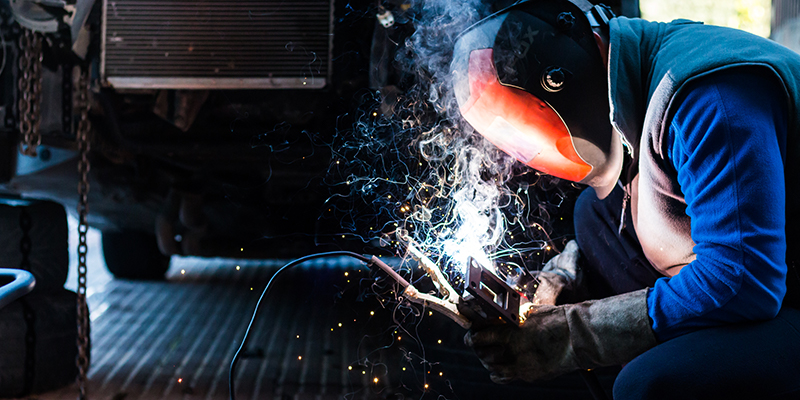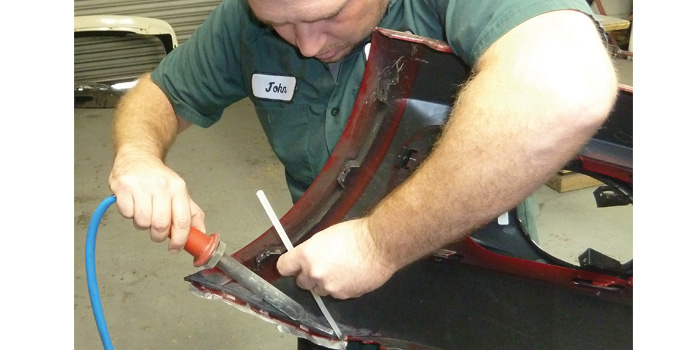Montana Mobile Welding and Repair Welding shares strategies on addressing heat distortion effectively
All Regarding Welding: Trick Insights Into Techniques and Finest Practices for Success
Welding encompasses a selection of methods, each suited for certain materials and applications. Understanding these approaches, such as GMAW, SMAW, and TIG, is important for achieving suitable outcomes. In addition, the right equipment and safety methods can not be overlooked. As prep work and repairing play vital functions in the welding process, understanding these aspects can substantially improve the quality of the last product. What are the crucial factors that assure an effective weld?
Recognizing Various Welding Methods
Welding techniques encompass a range of approaches, each matched to certain applications and materials. Amongst the most common methods are Gas Steel Arc Welding (GMAW), Shielded Metal Arc Welding (SMAW), and Tungsten Inert Gas Welding (TIG) GMAW, also referred to as MIG welding, is preferred for its speed and flexibility, making it perfect for thin products. SMAW, or stick welding, is preferred for its simpleness and efficiency in outside environments, especially with thicker steels. TIG welding provides accuracy and control, making it appropriate for elaborate job and non-ferrous metals (Montana Mobile Welding and Repair Belgrade). Each method has its distinct advantages and factors to consider, enabling welders to choose the very best approach based on the project's requirements, product type, and wanted results. Recognizing these strategies is necessary for successful welding
Important Welding Tools and Tools
While various welding techniques need specific abilities, the right tools and tools are equally crucial for attaining quality outcomes. Vital welding tools consists of welding makers, which differ relying on the strategy-- such as MIG, TIG, or stick welding. Protective gear, including gloves, headgears, and aprons, guarantees security and convenience during the process. Furthermore, clamps and fixtures aid safeguard materials in location, ensuring precision in welds. Consumables like welding poles, cable, and securing gas are additionally crucial components that affect the quality of the weld. Devices such as cutters and mills promote surface area preparation and post-weld completing, adding to an expert outcome. Purchasing top notch devices ultimately improves the performance and efficiency of welding projects.
Safety And Security Practices in Welding
Correct security practices are crucial in the welding market to secure workers from possible risks. Welders should put on proper individual protective tools (PPE), consisting of headgears with appropriate shading, handwear covers, and flame-resistant apparel. Appropriate ventilation is essential to decrease direct exposure to unsafe fumes and gases generated during the welding process. In addition, workers ought to be educated in the correct handling of welding devices to stop accidents. Fire precaution, such as keeping flammable products far from the welding location and having fire extinguishers conveniently offered, are necessary. Routine evaluations of devices and workspaces can assist determine prospective dangers before they lead to mishaps. By sticking to these security practices, welders can create a safer working setting and decrease risks connected with their trade.
Preparing Products for Welding
Preparing materials for welding is a vital action that greatly affects the high quality and stability of the final product (Montana Mobile Welding and Repair Fabrication). Correct preparation involves cleaning up the surfaces to eliminate pollutants such as dust, rust, and oil, which can jeopardize the weld. Techniques such as grinding, fining sand, or using solvents are generally utilized to achieve a tidy surface. In addition, making certain that the products fit together snugly is essential; voids can bring about weak welds. It's also vital to consider the positioning and positioning of the components, as this will certainly affect the ease of welding and the last outcome. Selecting the ideal filler product and guaranteeing compatibility with the base metals is important for attaining strong, resilient welds.
Tips for Achieving High-Quality Welds
Achieving premium welds requires attention to detail and adherence to finest practices throughout the welding procedure. Correct joint preparation is crucial, ensuring surfaces are complimentary and clean from contaminants. Picking the appropriate filler product and welding method based on the base metals is essential for suitable bonding. Preserving regular traveling speed and angle while welding can avoid problems and advertise uniformity. In addition, managing warm input is vital; extreme warmth can lead to bending and compromised joints. If needed, frequently examining the welds throughout the process permits for prompt changes. Lastly, employing appropriate post-weld therapies, such as cleansing and anxiety relief, can improve the durability and integrity of the weld, ultimately guaranteeing an effective outcome.
Troubleshooting Typical Welding Issues
Welding frequently presents difficulties that can influence the top quality and stability of the end product. Typical issues such as porosity, inconsistent weld beads, and getting too hot can emerge, each requiring details fixing methods. Recognizing these problems is crucial for welders to boost their abilities and attain perfect outcomes.
Porosity Problems Described
Although porosity can often be neglected, it stays a vital problem in welding that can jeopardize the integrity of an ended up product. Porosity describes the existence of small gas pockets within the weld grain, which can lead and weaken the joint to premature failing. This issue typically occurs from contaminants, moisture, or incorrect securing gas protection during the welding process. To mitigate porosity, welders ought to verify that the base materials are tidy and completely dry, use proper protecting gases, and maintain regular welding parameters. On a regular basis evaluating the devices and environment can likewise aid determine possible concerns before they manifest in the weld. Dealing with porosity successfully is vital for accomplishing solid, resilient welds that satisfy top quality criteria.

Irregular Weld Beans
Inconsistent weld grains can substantially affect the top quality and toughness of a completed item. Different elements contribute to this issue, consisting of inappropriate travel speed, inaccurate amperage setups, and inconsistent electrode angles. When the welder relocates as well promptly, a grain might appear slim and do not have infiltration, while relocating also slowly can create extreme accumulation. Furthermore, making use of the incorrect amperage can lead to either damaging or too much spatter, both of which compromise weld integrity. The welder's method, such as inconsistent lantern movement, can additionally lead to uneven bead appearance. To minimize these problems, welders need to concentrate on preserving more info stable, controlled activities and making certain proper devices settings to accomplish uniformity in their welds. Consistency is vital to accomplishing reputable and solid welds.
Overheating and Bending Issues
Extreme warm throughout the welding procedure can result in considerable getting too hot and buckling concerns, influencing the architectural honesty of the work surface. These issues commonly materialize as distortion, which can endanger placement and fit-up, making further setting up challenging. Aspects adding to overheating include the choice of welding criteria, such as voltage and take a trip rate, as well as the sort of material being bonded. To reduce these problems, welders ought to preserve constant travel speed and suitable warm input while checking the work surface temperature level. Furthermore, preheating or post-weld warmth therapy can aid alleviate stresses triggered by rapid cooling - Belgrade Fabrication. Regular inspection and adherence to best practices are important in preventing getting too hot and ensuring the durability and dependability of bonded frameworks
Often Asked Questions
What Are the Job Opportunities in the Welding Industry?
The welding market supplies varied profession chances, consisting of settings as welders, engineers, assessors, and educators. Specialists can operate in manufacturing, building, aerospace, and automobile sectors, gaining from solid demand and competitive incomes in numerous duties.
Just How Can I Enhance My Welding Rate Without Sacrificing Quality?
To enhance welding speed without sacrificing quality, one should exercise reliable methods, keep devices, maximize setups, and boost hand-eye sychronisation. Regular training and seeking responses can likewise substantially add to attaining quicker, high-quality welds.
What Certifications Are Available for Welders?
Countless qualifications exist for welders, including those from the American Welding Society (AWS), the National Center for Building Education and Research (NCCER), and various industry-specific companies. These credentials enhance employability and demonstrate ability effectiveness.
How Does Welding Affect the Features of Metals?
Welding influences the properties of steels by modifying their microstructure, which can lead to adjustments in toughness, ductility, and firmness. Warmth input and cooling prices during the procedure greatly influence these material characteristics.
Can I Weld Dissimilar Metals Together?
